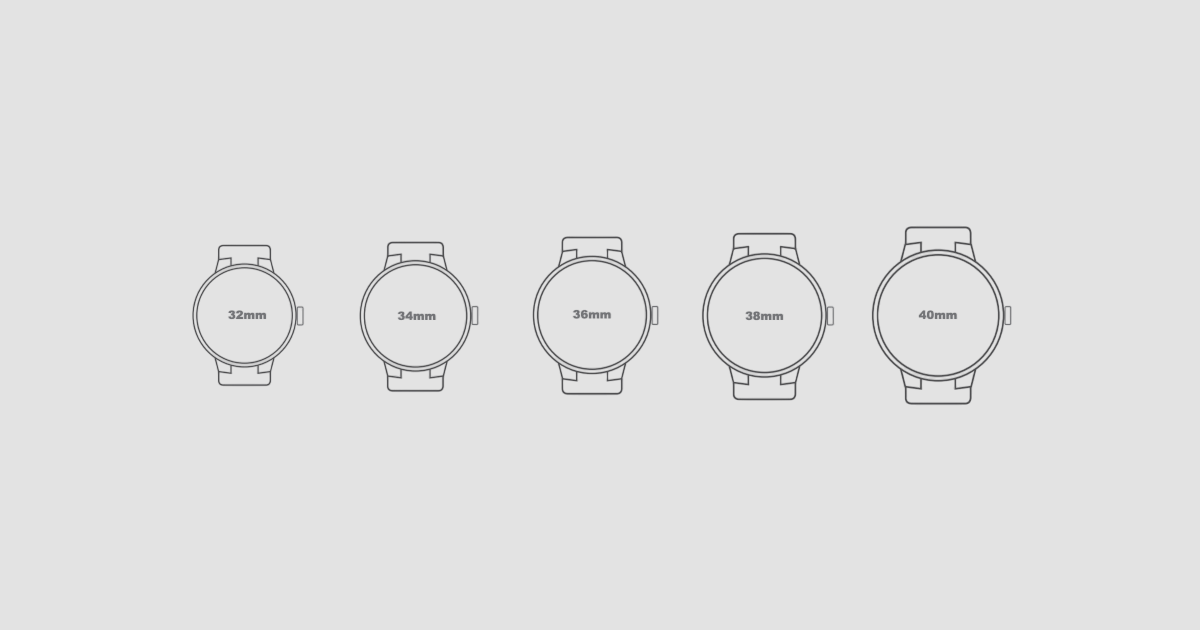
Newsletter Subscribe
Enter your email address below and subscribe to our newsletter

Enter your email address below and subscribe to our newsletter


Watch Sizes Guide is essential for ensuring both comfort and aesthetic appeal when selecting a watch. Choosing the correct size not only enhances how comfortable it feels to wear but also ensures it complements your overall look. This guide provides detailed insights on how to find the perfect watch size for your wrist, combining practicality and style effortlessly.
Table of Contents
Wearing a watch that doesn’t fit well can lead to various issues, both in terms of comfort and appearance. A watch that’s too large on a smaller wrist can look overwhelming and unbalanced, while a watch that’s too small on a larger wrist may appear disproportionate. Here are some key reasons why getting the right size matters:
Finding the ideal watch size involves considering factors such as your wrist circumference and the overall design of the watch. Here’s a step-by-step guide:
The first step is to measure your wrist circumference, as this will help you determine the range of watch sizes that suit your wrist’s shape and size. Here’s how to measure it:
This measurement will guide you in choosing the right case diameter, thickness, and strap type.
The case diameter is one of the most critical aspects of selecting a watch. It refers to the size of the watch’s outer casing, usually measured in millimeters.
Note that case diameter preferences may vary based on personal style and fashion trends. For instance, classic watches tend to have smaller diameters, while modern designs often feature larger cases for a more prominent look.
Case thickness is another vital factor that affects both comfort and aesthetics. Generally, thicker cases are paired with larger diameters, while slimmer cases complement smaller diameters.
If you often wear long-sleeved shirts, especially formal ones, ensure the case thickness doesn’t interfere with your sleeve’s fit.
The strap width significantly influences the watch’s overall appearance. A strap that’s too wide or too narrow can disrupt the visual balance between the watch and your wrist.
As a general rule, strap width should be approximately 50% of the case diameter.
Examples:
Wider straps often look more robust and masculine, while narrower straps tend to create a sleeker, more refined aesthetic.
The watch’s overall design—including its shape and material—also plays a role in determining its suitability for your wrist.
The material of the strap not only influences comfort but also affects how the watch complements your wrist. Common strap materials include:
When choosing a watch, many people make mistakes that can lead to dissatisfaction with their purchase. Here are some common pitfalls:
If you already own a watch but find it doesn’t fit well, there are ways to make adjustments:
Finding the right watch size for your wrist involves paying close attention to details like wrist circumference, case diameter, case thickness, strap width, and the overall design. By considering these factors, you can choose a watch that not only fits comfortably but also enhances your style.
Always try on the watch before buying and factor in your lifestyle and preferences. A well-sized watch is a timeless accessory that adds a touch of elegance and personal flair to your look.